ART IS AN ASSET
Norman Warwick sees
ART IS AN ASSETT
for those who craft and create on Lanzarote

This tiny village of Mancha Blanca, with it´s glorious church (left) so dwarfed by the edifice from which it takes its name, recently enjoyed its busiest this week from 11th to 15th September, as the annual Artisan Fair was taking place on the fields around the church. eight years since we have lived on the island, we have visited this fair in all but covid times. We have bought items including beautifully crafted small items of furniture and sent them over to our son in South Korea,. Andrew has his own woodworking room over there, and has made items such a sa dressing table for his twelve year old daughter,and items for his wife and we are certain he would love this market place.
Because it enjoys temporal and spatial proximity to the religious events at the church, many hundreds of holidaymakers mix freely with the local population at this yearly Arts and Crafts Fair at Mancha Blanca. All this is combined with the traditional ´Music Folklore Festival¨ celebrated every evening. On display is a variety of local handicrafts both traditional and modern, including pottery, embroidery, weaving, leather-ware, hats and baskets of palm leaves, wood carving and jewellery made from olivine a local semi-precious stone found in volcanic rock.
Food stalls and restaurants serve fairgoers also with the best of local cuisine; “Saborea Lanzarote” fish and meat dishes cooked Canary-style, or delicious tapas with cheeses and unique wine from grapes cultivated in volcanic soil as can be stretching away to far horizons on the bodegos on La Geria, Islanders, and tourist too, love the traditional “gofio” cereal, the food of the ancient Guanche inhabitants of the Canaries.
In previous years we have visited the fiar during the day, when the bunting is fluttering under clear blue skies, restaurants are doing a roaring trade as various dignitaries wander the exhibition tens. There are short ad hoc concerts delivered, and sometimes there have been wandering minstrels delivering folk lore music, including every few minutes a different version of the ubiquitous Gauntanamera
This year, however, we were seduced by the afore-mentioned traditional ´Music Folklore Festival¨ celebrated every evening, to visiting at a later time. The arena itself is open for the two days of Monday and Tuesday until late into the night, then on the Wednesday and Thursday it is closed during the day but opens at 5.00 pm and on Friday, its closing day, it is open from morning until ate into the night.
So we chose Wednesday, and did not leave our home in the South Of The Island until 5-00 pm. The forty five minute drive to Manche Blanca takes us across the volcano road over Timanfaya. The views are extraordinary, colours changing hue as sun and white clouds glide above. We seemed to be the only car on the road, although day time tourist traffic is causing something of a controversy at the moment. To drive through the middle of the lava fields and be able to identify, at several points, the blue ocean in the distance as the sun dropds diamonds down the coast is wonderful.
We pass peaks and craters, and the magnificent volcano-visitors centre, with its high tech displays and exlanmations and readings of seismic activity.
We then come to a t-junction. Turn left and you will beheading through the beauitful town of Tinajo as you head down the coast to Santa, a surfers´hang-out with a quaint, working fishing harbour. We turn right which would take us on to the La Geria vineyards, but we take a shapr left before then and drive down and unmade road that leads us up into open land, and have to drive along a bit of rough road to a massive free car park, itself on a bit of rough road.
As we pull up to park we realise we are facing the mountain that gives this deceptively small village its name. “Mancha Blanca” means “white spot”, a reference to the white spots that one can see on the Caldera Blanca, the nearby volcano of the village. These white patches are due to the presence of lime in rocks of this volcano eruptions that predates the eighteenth century.
This incredible landscape could not be imagined by tourists who do not leave the main roads. It is effectively a very wide, two layered basin, agriculturally productive, at the foot of the mountain. Almost as if in the very pug hole of this basin stands the church, solid and steadfast, right by the bus stop and the site of the weekly vegetable market.

Although the artisan market has not yet been open for an hour, the exhibitions, and fairgrounds for youngsters, are already busy. We sit at one of the outside bars opposite the church for a slow beer and forty five minutes or so later we head up the slight slope to the entrance to the exhibition. (right)
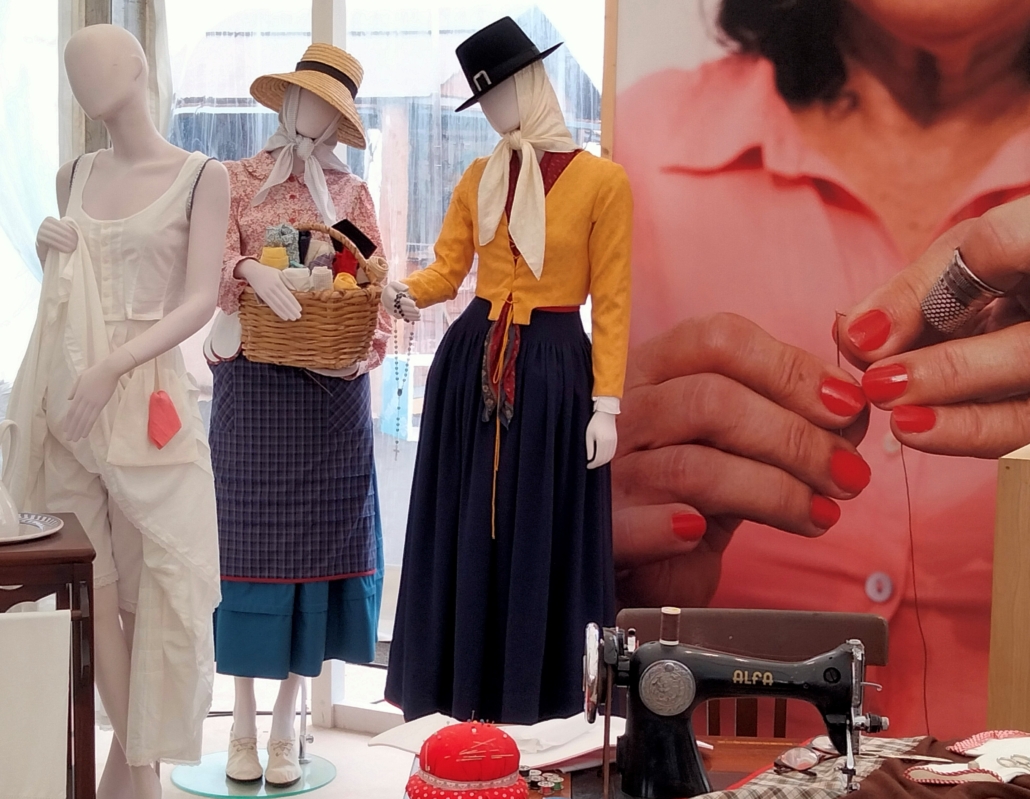
This is really a collection displaying a huge range of arts and crafts that take place on Lanzarote, some of which have grown into commercial organisations but many of which remain, still a cottage industry. There is much knitting, stitching and sewing and fastening and buttoning (left) with some fantastic outfits in the local tradition still being made.
The artisan market is, like Lanzarote itself a strange combination of ancient and modern ideas imported and exported by boat and plane these days. Of course, there is a massive Canary Island around the world so ti shoulde be nor surprise that its impact should rebound outwards and homeward again.
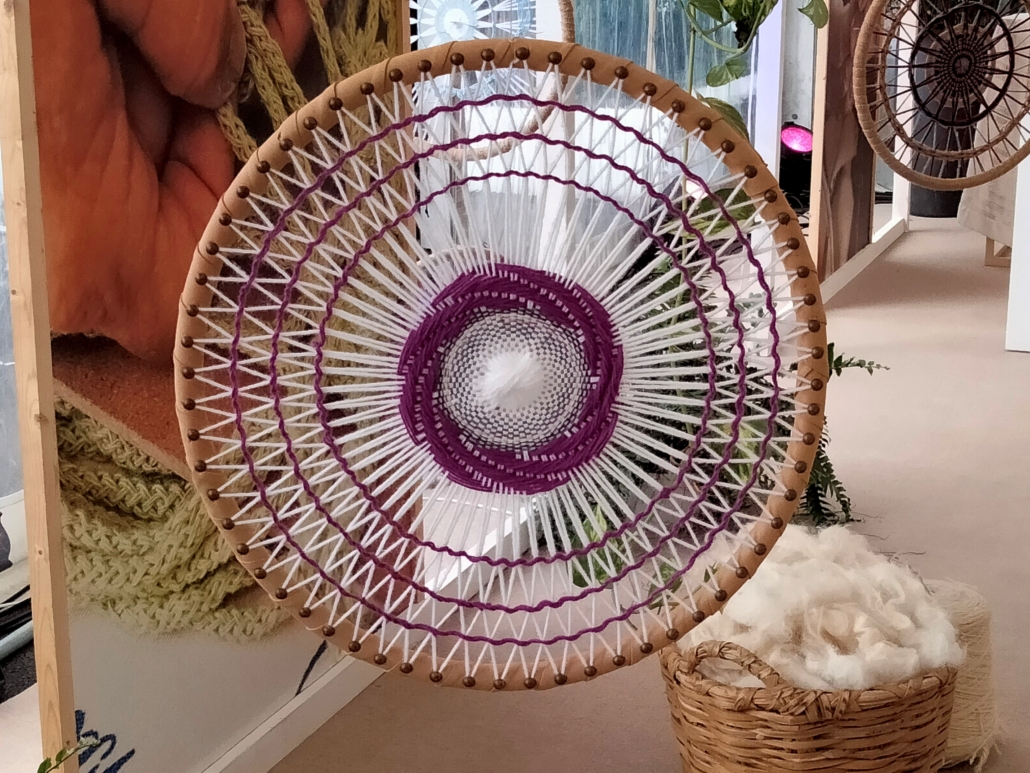
That makes for some eye catching pieces, such as variations of the Dreamcatchers, (RIGHT) also called nets or dream traps, they were invented and widely used by the Ojibwe tribe. The territories of this tribe stretched from Canadian to North American regions. The development of the tribe through intermarriage and exchanges, in particular, allowed the diffusion of this object. On display here were pieces of all sizes in various textiles, all brightly coloured and hand made with love.
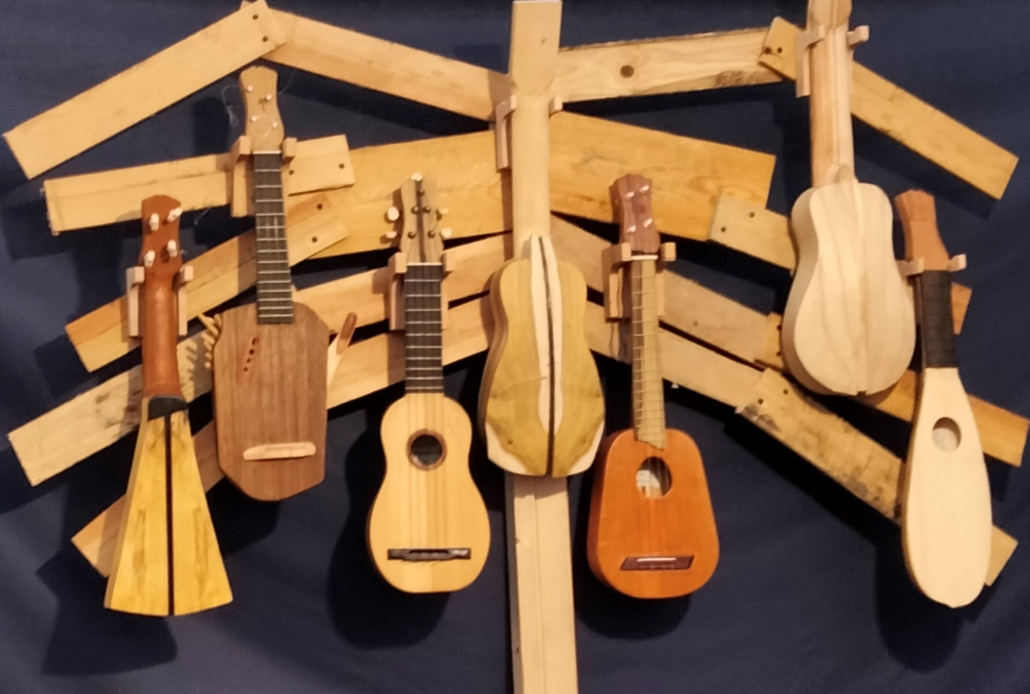
As many of our music-loving readers will know, singer-writer Guy Clark was much in demand luthier, a craftsman who makes and repairs stringed instruments. Most luthiers specialize in working with one type of instrument. A guitar luthier will have. studied and trained in the art of guitar repair and construction. We have a wonderful Timple Museum in Teguise, which shows the history of timple-making on the island, and demonstrates in fascinating detail how these small ukelele-like instruments are created . (left).
At this year´s Artisan Festival was a stall inhabited by a local luthier from Estow Studios. Described as an innovative and sustainable project Estow relies on the use of wood and articles of natural origin to make their original quality instruments whilst preserving and improving the beauty the material. our son is a huge Guy Clark fan and plays the banjo, so when the luthier from Estow told us his starting price for an orginal nnd unique timple would be around 200 euros, we ear marked one for a few years time for our´boy´s´fiftieth birthday. We need to bear in mind, though, that postage and packing will probably double that price ! Maybe he´d settle for a plectron.
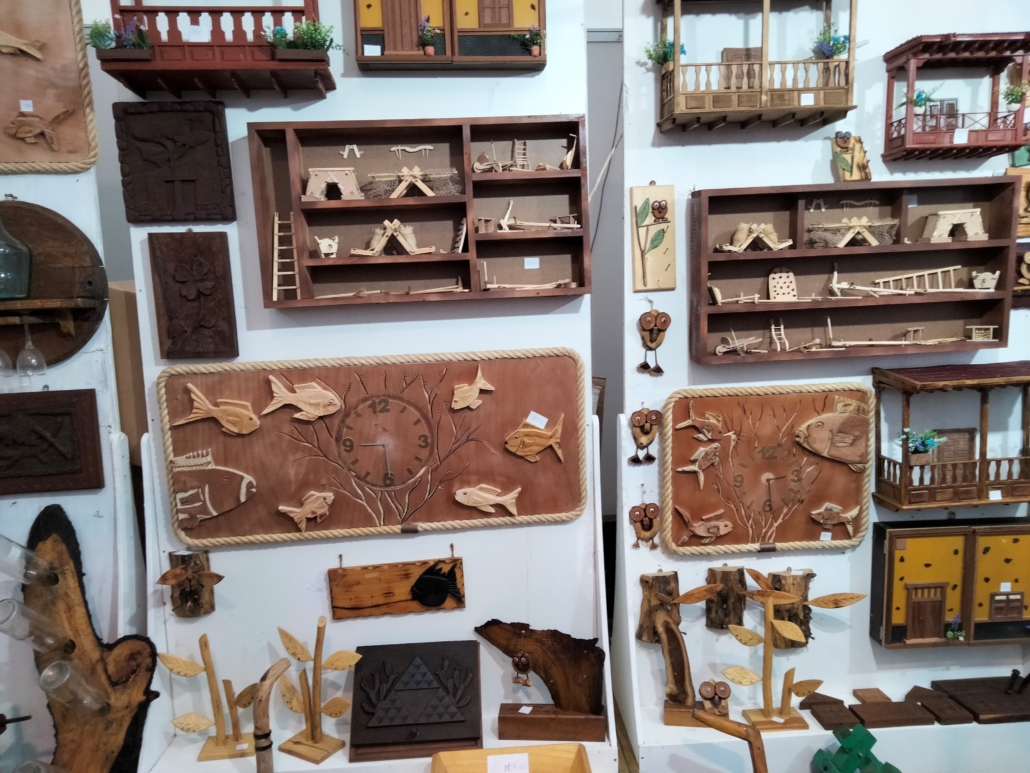
In terms of carpentry, instruments were not the only product on show. There were all sorts of home ´knick knack´ articles as we might have called them in the UK.. although artefacts (right9 might be more apt. The balcony style show in the top right of our phot is very recognisable here on Lanzarote, and one such in Teguise a few years ago, created a perfect balcony scene for a strolling production through the City´s street, of Rome And Juliet.

My wife was very interested in seeing some WOOL work (left))rather than the wood work that had caught my eye.y. Dee sews, crochets, and knits (and she constantly needles me) so she looked at an exhibition of rag dolls in hand-knitted clothes. Some of them reminded us of Statler and Waldorf, the two disagreeable old men rounding out the core group of the Muppets characters. Best known for heckling Kermit and Miss Piggy and other cast members. from their balcony seats in Muppet Theatre.
It is fantastic that the artisans of The Canary Islands are so keen to publicly show their wares, but it is even more significant, I think, that the government support thm in doing so. An event this size, of course, is a magnificent marketing opportunity for not only the artists but also the authorities of the Cabildo (government) who run this sector but also for the artisans and associations exhibiting.
Those involved, though, do not rest on their laurels, Outside, even as crowds were strolling round what seemed miles of exhibition still in the massive town, outside in the courtyard a lively panel-led debate was taking place seemingly on the topic of of what artisans and artists should offer, and expect from, the community. It seemed a lot more civilised than some of the pub debates I took part in back in the UK, and it was great see the audience participating in question and answer session on each aspect of the topic.

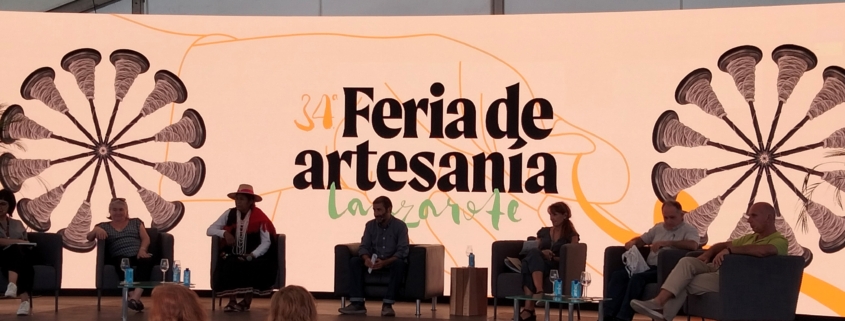


Leave a Reply
Want to join the discussion?Feel free to contribute!